
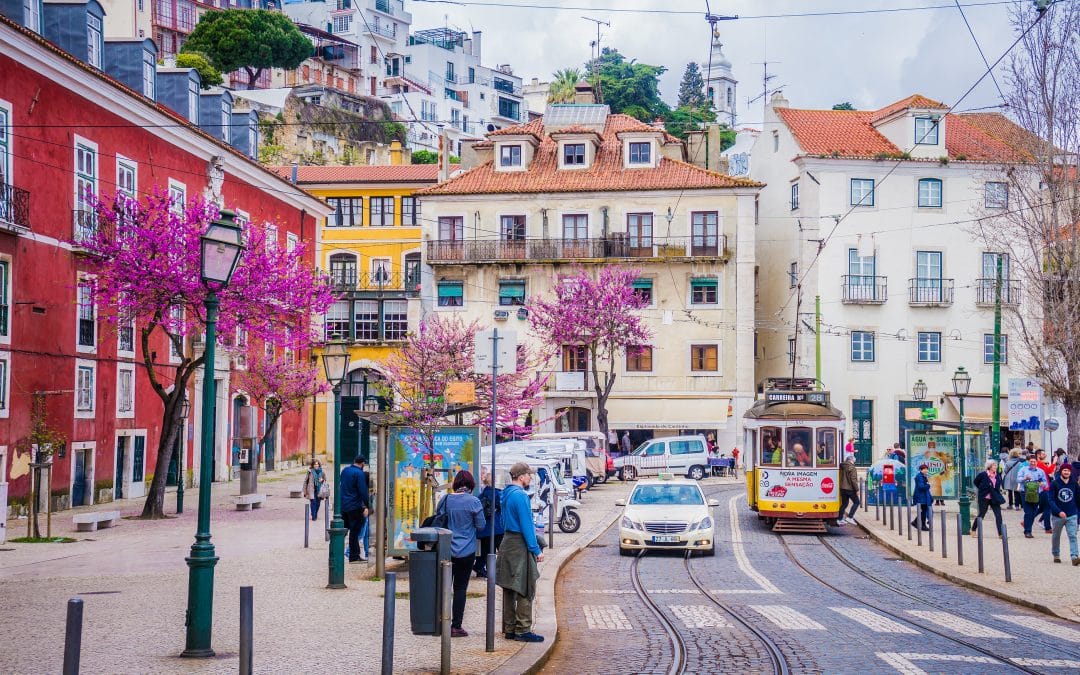
How to be a Digital Nomad in Lisbon Portugal
Lisbon has incredible historical design as well as various sites you definitely need to see while you are there.
![]() 10 people find this post amazing!
10 people find this post amazing!
The island of Bali has enticed many expats to retirement overseas. And, for quite some time, the towns of Sanur, Legian, and Seminyak have been popular choices. But just up the coastline is Canggu and it’s quickly growing in popularity.
Canggu, pronounced “changoo”, is a village located only 9 miles north of the more well-known party resort, Kuta. The western coastal stretch spans about 5 miles, running from Berawa beach to the village of Cemagi. It was once a hidden corner of the island, only known by a select few, but it’s now become one of Bali’s up-and-coming hotspots.
Hinduism is the main religion across Bali and it’s no different here. There are many temples and shrines throughout the town, with the most famous of all found in the village of Cemagi.
The coast strip is dotted with many lava stone temples, some of them centuries old and important to the Balinese culture. The Tanah Lot temple is honored by the Balinese and holds special significance in Balinese history. Literally meaning “Temple of the Sea”, the revered temple sits on a large offshore rock formation and at high tide is surrounded by the ocean.
The temple dates back to the 16th century and the main deity is Dewa Baruna, a sea god. The temple is one of seven sea temples around Bali, which are important in Balinese mythology.
Driving into the region of Canggu evokes a country feel. The traffic thins, the crazed pace of the southern tourist areas is left behind and there’s a definite change to the urban sprawl. Fields of rice, banana plantations, and old-style warungs (small local eateries) line the roadsides. Local homes are dotted among the new villas and boutique hotels that are popping up. Despite the changing scenery, Canggu retains a surfing town feel, reminiscent of the northern Sydney beaches back in the day.
Bali lies in southern Indonesia between the islands of Java and Lombok. It is considered the most popular tourist destination in the country and is especially attractive for backpackers, budget travellers and digital nomads. Bali has a population of over 4 million people which are mostly concentrated to the southern part of the island while the centre and northern parts are more rural.
More than 6 million tourists visit Bali every year which shows it is far from the untouched paradise it once was hailed to be. However, at more than 5,700km² the island is large and there still are many corners that haven’t been overrun by hordes of tourists just yet. The much smaller neighbouring islands Nusa Penida, Nusa Lembongan and the Gili Islands have recently become hot new destinations for tourists and digital nomads alike.
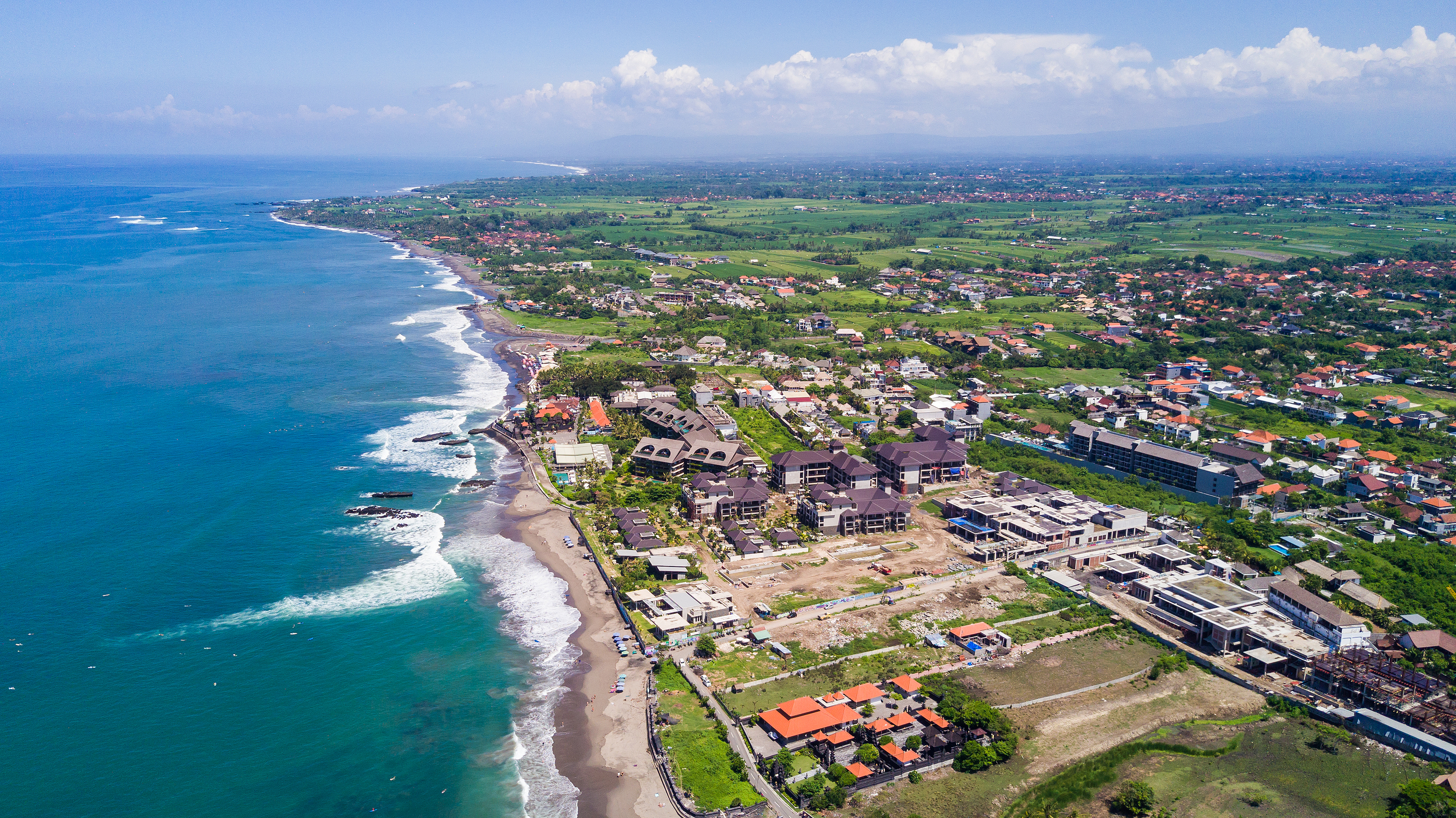
Bali is not only known for its world-class beaches and favourable climate, it also has a unique culture and history that is very different from the rest of Indonesia. Bali has a lot to offer including incredible surf spots, lush rice terraces, ancient temples, beautiful landscapes, scenic volcanos and so much more. Its world-famous diving and snorkelling locations bring millions of tourists to the island every year and have encouraged many digital nomads, entrepreneurs and remote workers to make it their permanent home.
Bali has everything from impressive mountains, thick jungles and paradise-like beaches which is why many consider it to be the perfect island. It’s known for its yoga and meditation retreats but it is also famous for having some of South East Asia’s best nightlife with huge nightclubs and international artists performing regularly. In parts of the island, you’ll find luxury resorts and high-end restaurants by the beach while others are more laid back and popular amongst backpackers and surfers. Bali simply has something for everyone.
| ?️ Continent | Asia | ?️? Country | Indonesia |
| ✈️ Average trip length | ?29 days | ?️ Internet speed (avg) | ?25 Mbps |
| ☀️ Weather (now) | ? 31°C + ? Sweaty (79%) = feels 40°C | ? Air quality (now) | ? 66 US AQI ? OK |
| ? Power | 230V 50Hz | ? Best taxi app* | GoJEK |
Canggu has a tropical monsoon climate and is undeniably warm all year.
On average, the temperature ranges between 26 to 30 degrees, but you can expect a rainy season that lasts between November to April.
The dry season in Canggu means you get to surf, dive, climb mountains and be as adventurous as you like.
As always, rainy seasons can be good and bad. Prices are lower as there’s less of a crowd, but occasional tropical storms might limit your movement and it’s wet everywhere.
| ?? Speaks Indonesian+497% | ? Fitness+84% | ? Paleo+68% | ? Fight sports+50% |
| ?? Speaks Dutch+144% | ? Volleyball+82% | ? Crossfit+67% | ? Ecommerce+46% |
| ? Surfing+92% | ? Kitesurfing+80% | ? Race sports+60% | ? Crypto+36% |
| ? Conservative politics+87% | ? Free diving+77% | ? VR Dev+52% | ? Logistics+33% |
| ? Cost of living for nomad | $1,415 / month | ? Cost of living for expat | $989 / month |
| ? Cost of living for family | $1,674 / month | ? Cost of living for local | $478 / month |
| ? 1br studio rent in center | $346 / month | ? Coworking | $242 / month |
| ? Hotel (median price) | $420 / month | ? Hotel (median price) | $20 / night |
| ? Airbnb (median from 1,001 listings) | $2,015 / month | ? Airbnb (median price) | $66 / night |
While Canggu is known as the new hotspot in Bali, the population hovers around 40,000. Old-time Bali still exists and appears to be prospering, with locals, tourists and expats, a mix of old and new all merging well.
During ceremony times, the temples are visited by the locals dressed in their traditional clothing. Tall bamboo poles decorated with color line the streets, and traffic comes to a standstill as blessings happen on the roads outside the locals’ homes.
Away from the beaches though, you’ll find it is still very much a rural area. You’ll come across large blocks of land, covered with lush, green rice paddies, filled with colorful scarecrows keeping away the birds. Watch as the Balinese men and women tend to their gardens as white herons wander the muddy flats.
There are three main villages that have thrived over the past few years: Berawa, Batu Balong, and Echo Beach. Ten years ago, a series of small villages were spread across these areas. They’ve since become lively pockets of shops, restaurants, cool cafés and bars, spas, and some amazing villas. There’s a buzz to the community and its popularity is increasing with both tourists and expats.
There is real diversity to the area, with beach clubs spread out and the beanbag-on-the-beach bars with drinks piled high inside eskies on the sand. There are no beach sellers, other than the occasional ice creams and coconuts, so you can sit back and enjoy the sun without being approached by the hawkers that favor Legian and Kuta beaches. Expat surfers and swimmers enjoy the waters of the Indian Ocean and the locals join in among them.
It may seem like a disjointed town. Buildings and river inlets mean you must drive around to each beach, if you’re traveling by car or bike. Known mainly to the locals, shortcuts do exist, but use them at your own peril. The shortcuts are virtually narrow paved paths, cutting across rice fields, paddocks, and villa properties. For a motorbike, it’s no issue, but for a car the width is barely wide enough.
On the beach at Pereranan, you’ll find the huge statue of Gajah Mina. An elephant’s head with a fish’s body, it’s one of seven animals highlighted in Hindu mythology. It was built in 2016 by the local community and you’ll also see the same depiction painted or carved into the temples around Bali.
The area is also famous for its large murals, seen on many walls as you make your way around the town. On one building, a 15-metre mural of a thinking woman is a standout. Sitting down, arms resting on her knees, she sits with her chin leaning on her hand, watching the world as it goes by.
Surrounded by sprawling fields of grass and banana trees, it’s one of the most photographed murals. You’ll see many street-art murals around Canggu, most of them commissioned art pieces that wouldn’t be out of place in the streets of Berlin or New York.
To learn more about Anyplace.com
Click Here Now.
| ✅ Affordable to live | ❌ Freedom of speech is weak |
| ✅ Very safe | ❌ Very sweaty and humid now |
| ✅ Fast internet | ❌ Feels crowded |
| ✅ Lots of fun stuff to do | ❌ Quality of education is low |
| ✅ Warm now | ❌ Roads are very dangerous |
| ✅ Warm all year round | ❌ Hospitals are bad |
| ✅ Good air quality on average | ❌Many people smoke tobacco |
| ✅ Many Nomad List members here all year round | ✅ Nomad List members liked going here |
| ✅ Easy to make friends | ✅ Very safe for women |
| ✅ Very easy to do business | ✅ Very friendly to LGBTQ+ |
| ✅ Family friendly | ✅ Democratic |
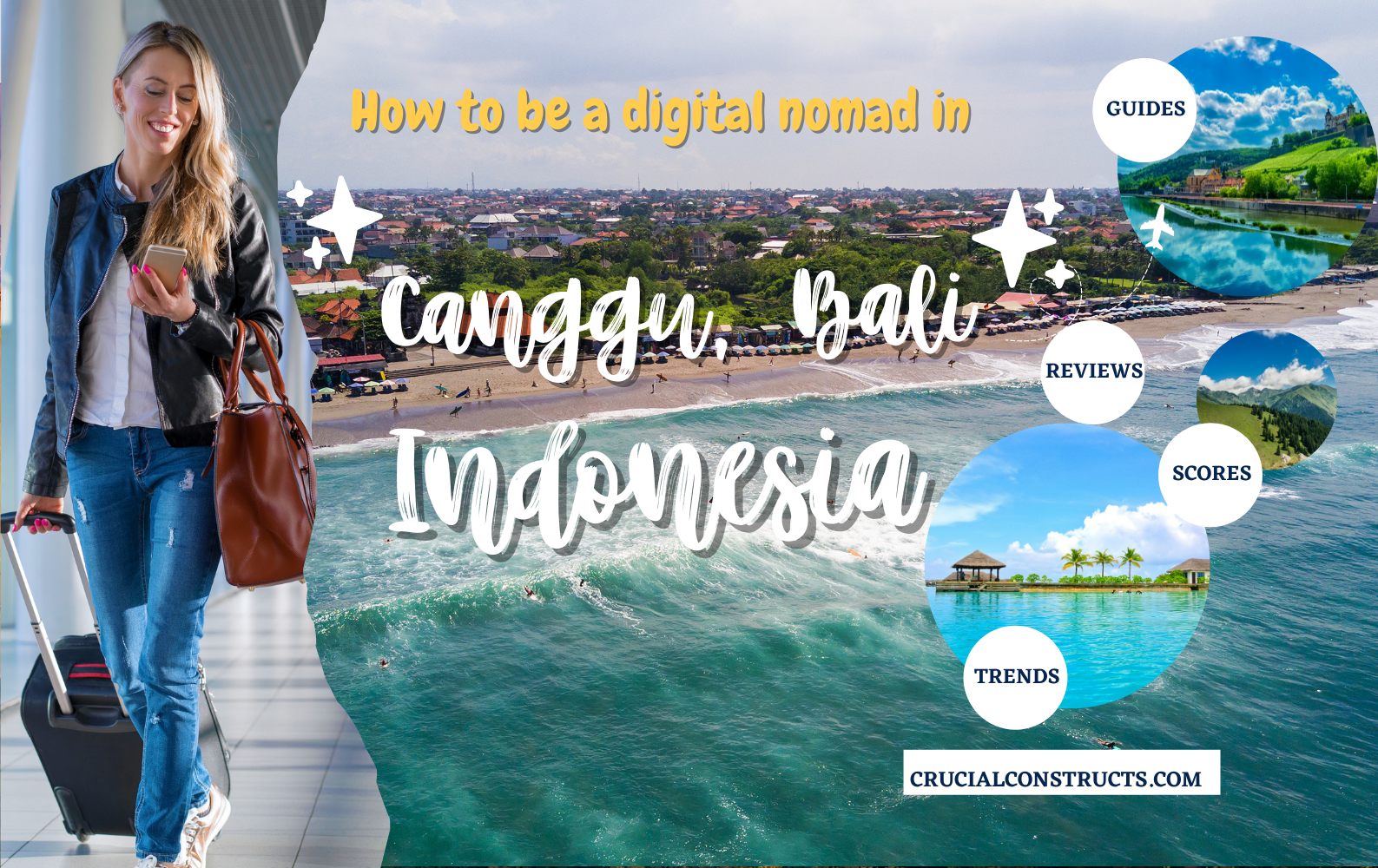
Canggu is a great place to live. Im a remote worker and have lived here for most of COVID and then some. In total Im thinking something like 20 of the last 24 months! It is brilliantly priced for someone with a steady income who wants their money to go far. I spent about $3,000 USD living like a king with a prime location villa, private chef, the most expensive gym and spa membership, and eating out at least 10 times a week.
https://nomadlist.com
https://digitalnomads.world
Widipedia.org
Expertvagabond.com
DigitalNomads.world
Thrivemyway.com
Abrotherabroad.com
Tomaslau.com
Thepointsguy.com
Websiteplanet.com

Lisbon has incredible historical design as well as various sites you definitely need to see while you are there.

Lisbon has incredible historical design as well as various sites you definitely need to see while you are there.
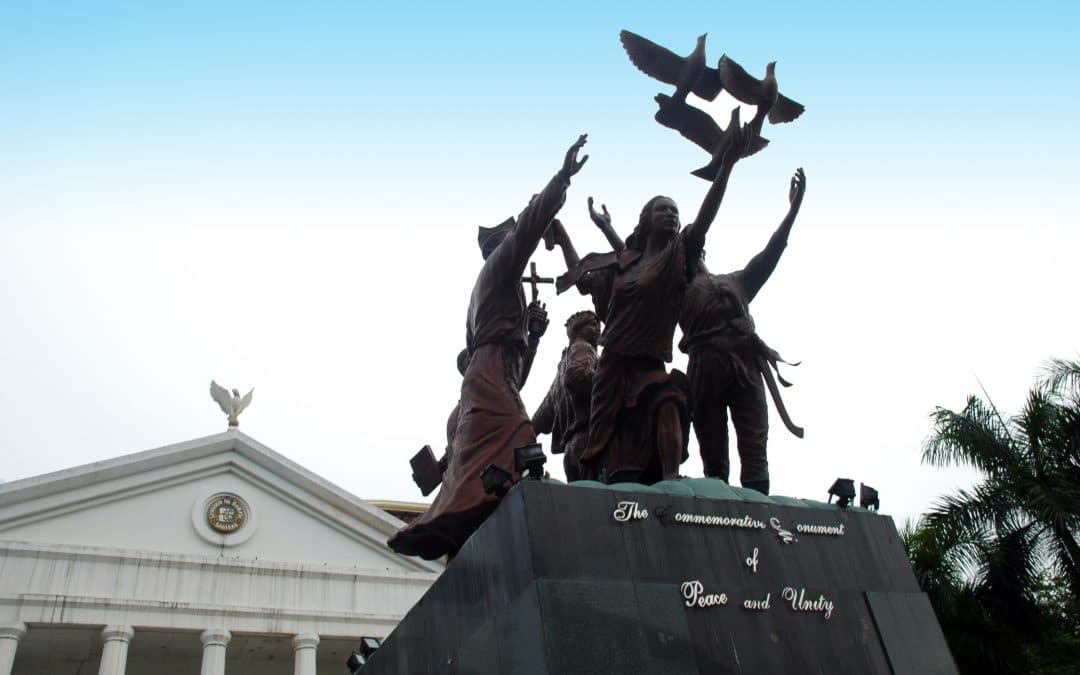
Davao City is the local center of Davao Area. It is the most populated city in Mindanao. Understood for its busy financial activities, city accumulation, and contemporary facilities, Davao City is one of the essential economies on the island and the 3rd most...
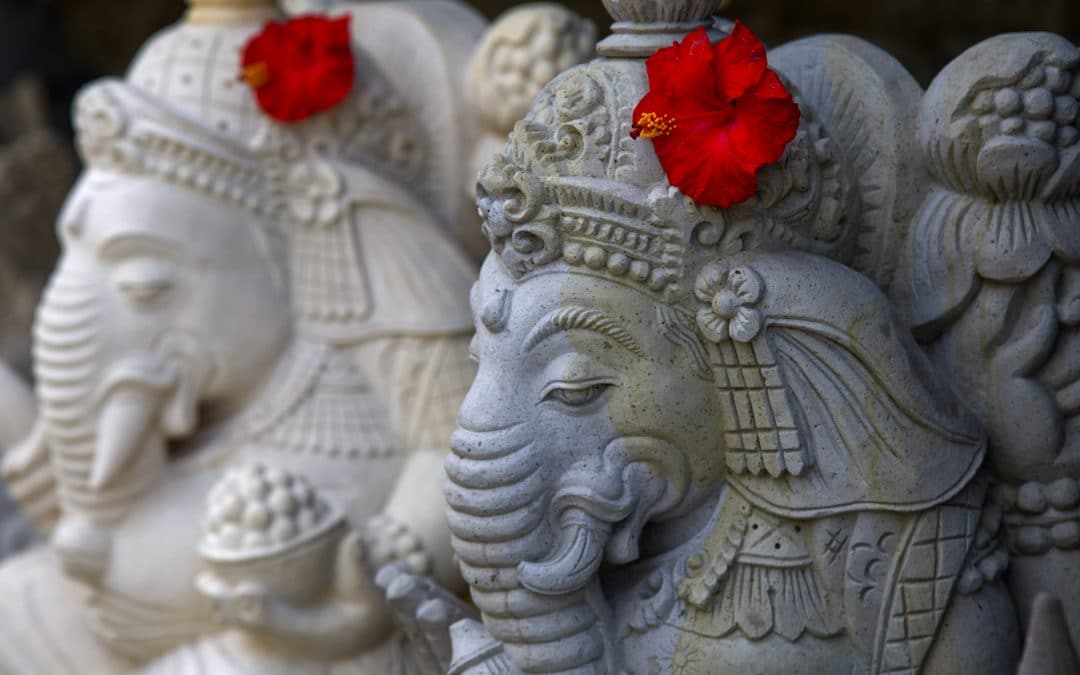
Bali has excellent mountains, thick jungles, and paradise-like beaches, which is why lots consider it the best island.
Table of Contents

Achieve Your Goals Now!
